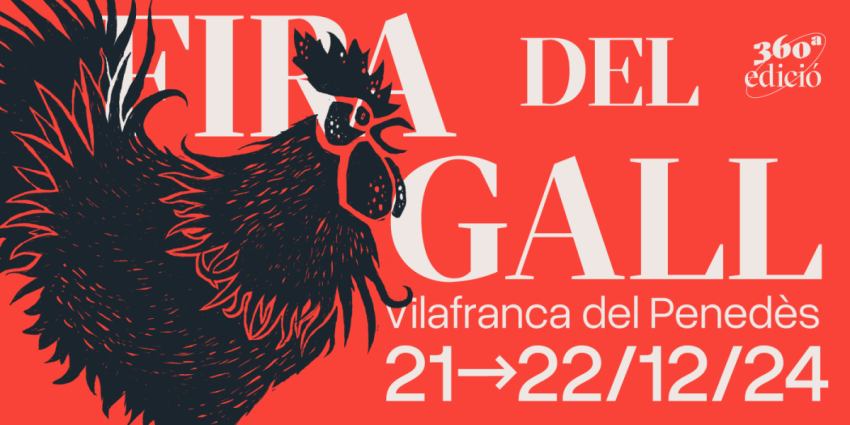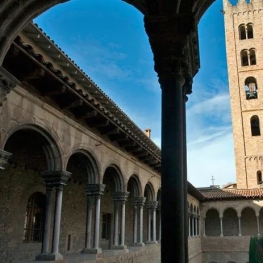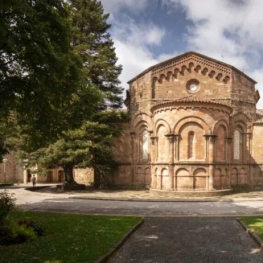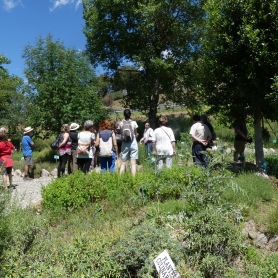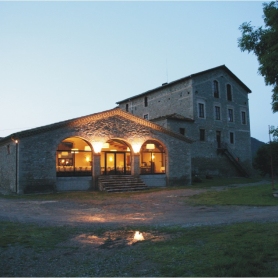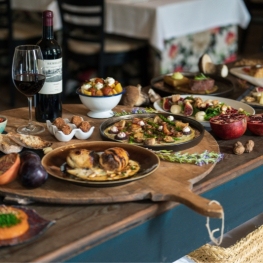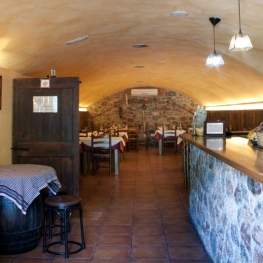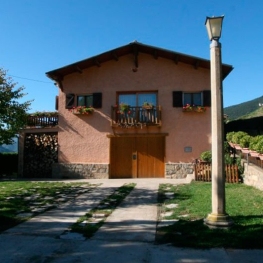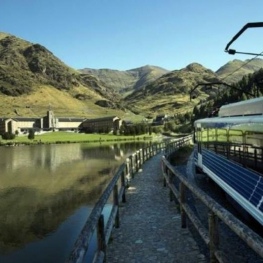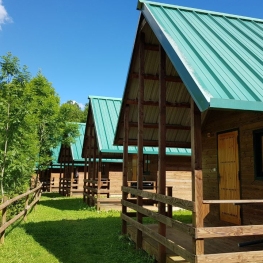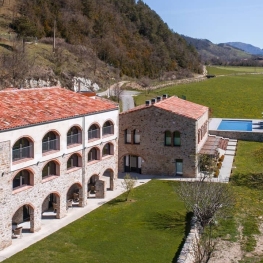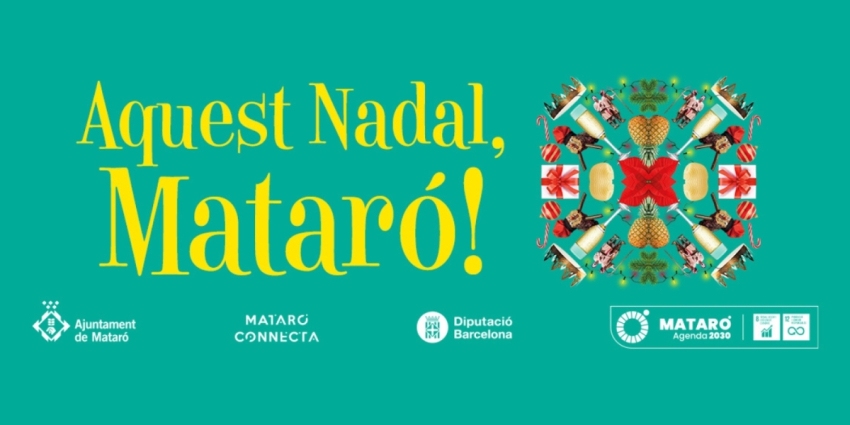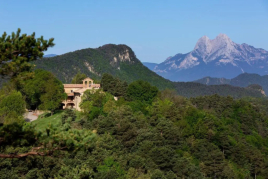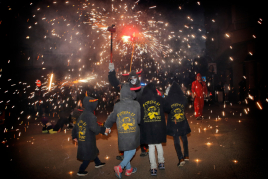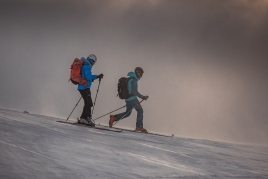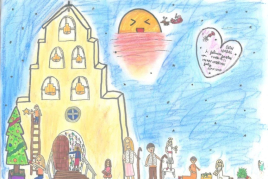Ripoll, cuisine and culture
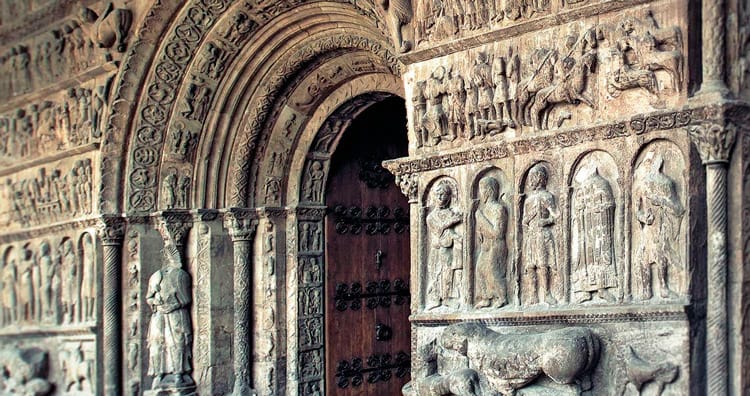
Ripoll is a municipality located in the Pyrenean foothills, particularly where the river crosses the Freser Ter, and is the capital of the region of Ripoll. Its strategic location made it an ideal place for immigration, becoming a plural region and live in harmony with its surroundings. As industrial town, has always respected nature and traditions, thus preserving their culture and heritage.
The origins of the population is believed to date back to the Bronze Age axes found it and some other dolmen testify so. However, the population of this territory had a significant weight in the ninth century. It is at this time when people experienced agglutination. This influx of people to the area was as a result of the construction of a Benedictine monastery by the Franks, led by a relevant character in Catalan history, Wilfred the Hairy.
Ripoll is a town full of history and a key element in the identity of Catalonia legacy, so much so that it has earned the nickname "the cradle of Catalonia".
But Ripoll is much more, it's culture, industry, nature and gastronomy. Do you urge to know this population in more depth?
The Monastery of Ripoll
 The Monastario Ripoll is one of the most important monuments in our country. He was raised in 879 by Wilfred the Hairy after conquering the valley of Ripoll. However, this construction Benedictine not experience its peak until the arrival of Abbot Oliva.
The Monastario Ripoll is one of the most important monuments in our country. He was raised in 879 by Wilfred the Hairy after conquering the valley of Ripoll. However, this construction Benedictine not experience its peak until the arrival of Abbot Oliva.
Also known as the Monastery of Santa Maria, and that in the year 888 was consecrated the first church dedicated to this saint, its construction meant that the population be established in their environment and, at the same time that the territory grow and enriqueciese.
Two years later, in 890, won the Church of San Pedro, which primarily serve the population and the servants.
 The building itself has grown in line with the territory due to the great importance of the monastery as a cultural center, it housed a library, a Scriptorium, ... That is why it became one of the main spiritual and cultural centers of medieval Catalonia .
The building itself has grown in line with the territory due to the great importance of the monastery as a cultural center, it housed a library, a Scriptorium, ... That is why it became one of the main spiritual and cultural centers of medieval Catalonia .
Currently, one of the most important attractions of this monastery is the XII century Romanesque. Considered as one of the most important Romanesque elements of the world, is also known as "the Bible in stone" because of its rich iconography.
In the transept and the nave walls of the monastery lie the graves of many counts, among which stands out the center's founder, Wilfred the Hairy.
The Scriptorium
 The Abbot Oliva was the one who led the Ripoll Monastery its most splendid period building Scriptorium driving.
The Abbot Oliva was the one who led the Ripoll Monastery its most splendid period building Scriptorium driving.
It was the room of the monastery where manuscripts were copied and translated featured in several languages, including Arabic, Greek, Latin, ..., Some of the manuscripts produced in this space have enjoyed great relevance in Europe.
Also, here produced the first Catalan historiographical texts. Note the work of Chronicos Rivipul · comitium lenses and Barcimonensium et Gesta regum Aragonum.
From writing to the forging of iron, Palau Forge
The town of Ripoll , besides being considered the cradle of Catalonia, has been instrumental in the production and working of iron in Catalonia.
 The iron industry was predominant in this population. Its production was based on the manufacture of weapons, specifically guns and encepadors panyetaires. However, later appeared other industry, claveteros, which were nailers.
The iron industry was predominant in this population. Its production was based on the manufacture of weapons, specifically guns and encepadors panyetaires. However, later appeared other industry, claveteros, which were nailers.
The activity was led by Iron Forge, better known as the Forge Palau, an industry that was inconclusive for obtaining iron during the seventeenth and eighteenth centuries, and one of the last examples of Catalan historical industry. It closed in 1978 but currently you can visit their facilities, which are open to the public.
Freser River was crucial to the operation of the Forge. The factory had a ditch that collected the water of the river. Subsequently, it was stored on a raft in order to move the water wheel that powered, turn the hammers to forge. At the same time, wind generated water pumps to keep alive the fire of the furnace and the forge.
The sweet face of Ripoll
 Regarding gastronomy, Ripollés region is characterized by the production of sweets and biscuits. We must remember that in a known Camprodón cookies are made.
Regarding gastronomy, Ripollés region is characterized by the production of sweets and biscuits. We must remember that in a known Camprodón cookies are made.
Ripoll also has its own delights, the Pats Moixaines and Ripoll. These are kind of sweet pastries made with rolled wafer batter enveloping a paste of almond and hazelnut.
The origin of these candies date back to the ninth century, when they were created in honor of Sant Eudald. It will be in the twentieth century, when recovered, and today can be found in every township cake at any time of year. You can also buy carquinyolis and almond.
But the cuisine of the region is not limited to sweets, but also includes typical products of the area, for example, forest mushrooms supplying the territory or the lamb and the kid of Ripoll.
Capital of Catalan culture
Ripoll has been appointed to lead the city the capital of Catalan culture throughout the year 2013, thus becoming a cultural landmark.
 The axes of the capital revolve around the "cradle of Catalonia" and industry. Not surprisingly, Ripoll has seen such iconic characters as Wilfred the Hairy and the Abbot Oliva, preserves a rich monastery, alongside a diverse heritage, and maintain their traditions and gastronomy.
The axes of the capital revolve around the "cradle of Catalonia" and industry. Not surprisingly, Ripoll has seen such iconic characters as Wilfred the Hairy and the Abbot Oliva, preserves a rich monastery, alongside a diverse heritage, and maintain their traditions and gastronomy.
Furthermore, the town of Ripoll is part of various tourist routes such as the Ruta del Hierro, while offering global tourism products such as the "Land of Counts and abbots" that structure the territory.
Therefore, Ripoll hosts a CAT (Tourist Reception Centre) dedicated to Count Wilfred the Hairy, which explains some aspects of this character so relevant in Catalan history.
What to do
Terra de Comtes i Abats a Sant Joan de les Abadesses
Sant Joan de les Abadesses (a 8.5 Km)Tierra de Comtes y Abats offers you a lot of proposals to…
Jardí Botànic de Gombrèn
Gombrèn (a 9.9 Km)In 1995, the initiative to create a botanical garden of medicinal plants…
Ratafia Bosch
Sant Quirze de Besora (a 11.4 Km)Come visit Ratafia Bosch and live the experience of discovering its history…
Where to eat
Restaurant Dachs
Les Llosses (a 8.4 Km)Restaurant Dachs offers versatile spaces for celebrations in Les Llosses, with rustic…
La Santa Restaurant
Ribes de Freser (a 10.3 Km)Our fires cook locally sourced food, harvested using traditional methods. We support…
El Recó de l'Avi
Guardiola de Berguedà (a 26.2 Km)Typical homemade cuisine, with oak-grilled meats, a wide variety of tapas and…
Where to sleep
Hotel Vall de Núria
Queralbs (a 22.2 Km)It is located in the center of the wonderful Núria Valley, hidden…
Càmping Vall de Ribes
Ribes de Freser (a 12.4 Km)Enjoy Camping Vall de Ribes, where you can immerse yourself in the…
Casa de colònies Les Codines, Fundesplai
Montesquiu (a 8.9 Km)Les Codines is located in the municipality of Montesquiu, in the Osona…
Hotel Rural Les Planes del Grau
Sant Joan de les Abadesses (a 11.8 Km)Enjoy a rural hotel with a sober and minimalist design but at…

